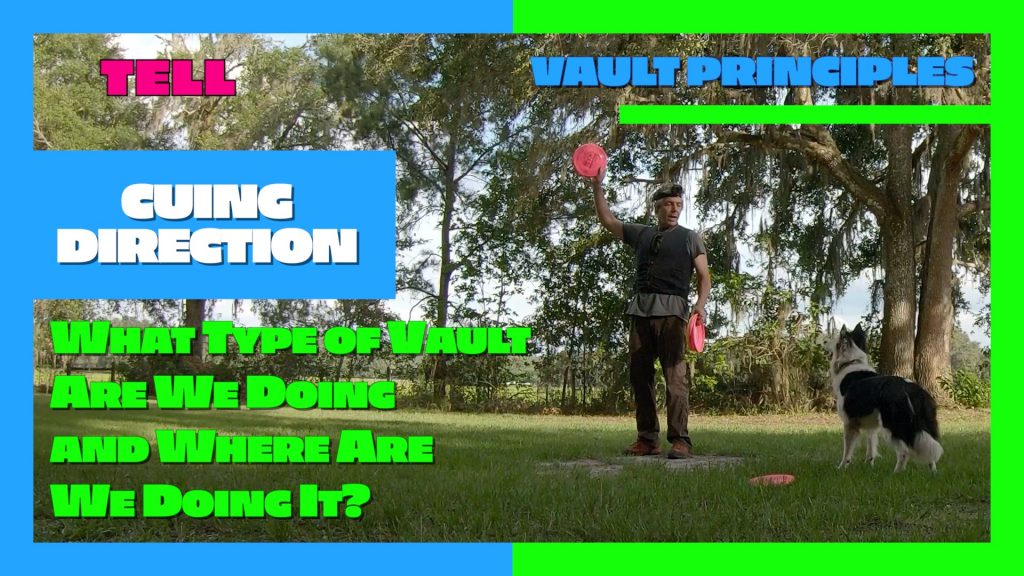
Disc Dog Vault Principles | Cuing Direction aka: Tell
What vault are we doing and where are we doing it? That is the very first thing a disc dog team needs to know. One of the most important vault principles, cuing direction, can be considered “Telling”. We Tell the dog which vault we are doing and where it will be done. Everybody knows what’s happening before anything actually happens..
How are you communicating that with your dog?
Three Steps: Tell | Trigger | Target
In this video 3 steps are highlighted. We tell the the dog what we are doing and where we are going to do it with a hand signal and a verbal cue. Then we let that sit for a moment.
From that still moment, we pull the Trigger, which is the obstacle being presented or the feet moving or stance shifting. You don’t want the trigger to be the disc, that is the Target and it will probably do some funky things before it becomes the target when it leaves our hand.
The Target is the disc in flight. The dog should leave the ground for the target.
In this lesson we are focused on one: Tell.
Verbal Discrimination
Your dog should know, by verbal discrimination, all the types of vaults you do. In my play, I have Top (linear vault), Rebound (a flipping vault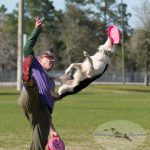 Essentially a flip off of a part of the handler's body, the Reverse Vault is a vault that stays on one side of the handler. If the dog starts the trick in front... More), Stall
Essentially a flip off of a part of the handler's body, the Reverse Vault is a vault that stays on one side of the handler. If the dog starts the trick in front... More), Stall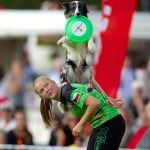 A Stall has the dog leaping up and chilling out on the handler’s back. Stalls are great for showmanship and for presenting a dog to the crowd. They create a dramatic or emotive... More (jump up on me and chill), Jakie
A Stall has the dog leaping up and chilling out on the handler’s back. Stalls are great for showmanship and for presenting a dog to the crowd. They create a dramatic or emotive... More (jump up on me and chill), Jakie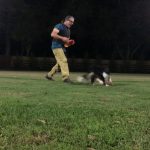 The Jakie is a trick where the dog intercepts the disc on the way to the handler's body and then uses the handler's body to safely and stylishly flip to land the trick.... More (catch the disc on the way to flipping off my body), and Fakie
The Jakie is a trick where the dog intercepts the disc on the way to the handler's body and then uses the handler's body to safely and stylishly flip to land the trick.... More (catch the disc on the way to flipping off my body), and Fakie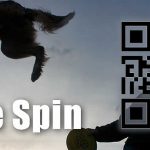 An athletic Set Up Move, the Fakie is a flip off of the handler's body (normally the chest) with no disc in flight or intended to be caught. It is usually named by... More (flip off my body for no target). Each of these has a verbal cue that my dogs understand.
An athletic Set Up Move, the Fakie is a flip off of the handler's body (normally the chest) with no disc in flight or intended to be caught. It is usually named by... More (flip off my body for no target). Each of these has a verbal cue that my dogs understand.
Cue Direction > Go Neutral > Be Still
After the verbal cue, cue direction with a simple physical presentation of the disc and cue. Present the disc as close as you comfortably can to where the Target is going to be caught. You don’t need to put it exactly where it will be caught, but do your best to show where it is going – putting it in line with where the catch will be made from the dog’s perspective is fine.
After the directional cue, it is important to settle into a neutral position. You don’t want the dog anticipating the cue from the physical presentation as the physical presentation is not, and should not be your Trigger. You still have to throw the target and don’t want to be rushed.
Being still and neutral draws attention to and isolates the Trigger. Which we’ll cover in another piece soon.
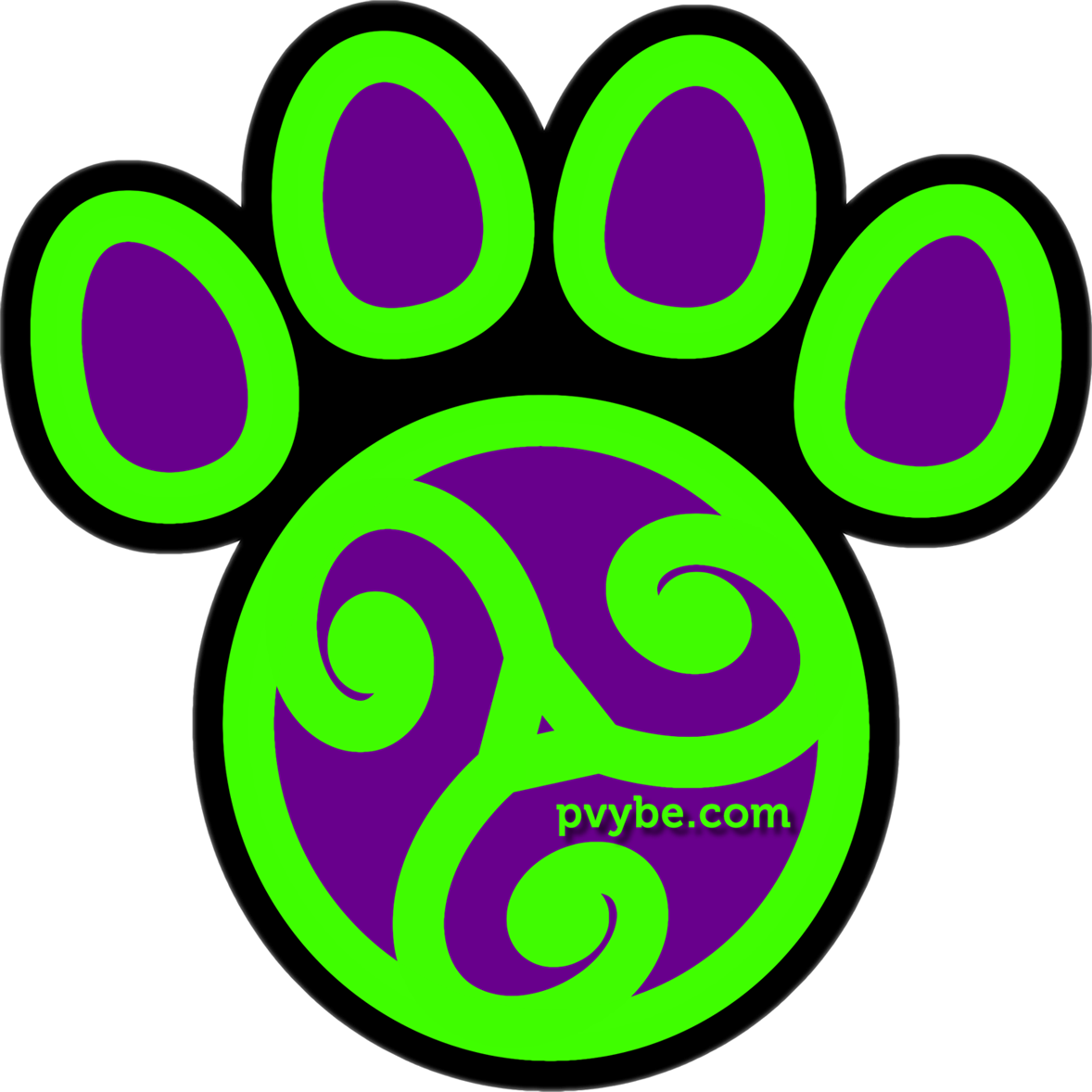


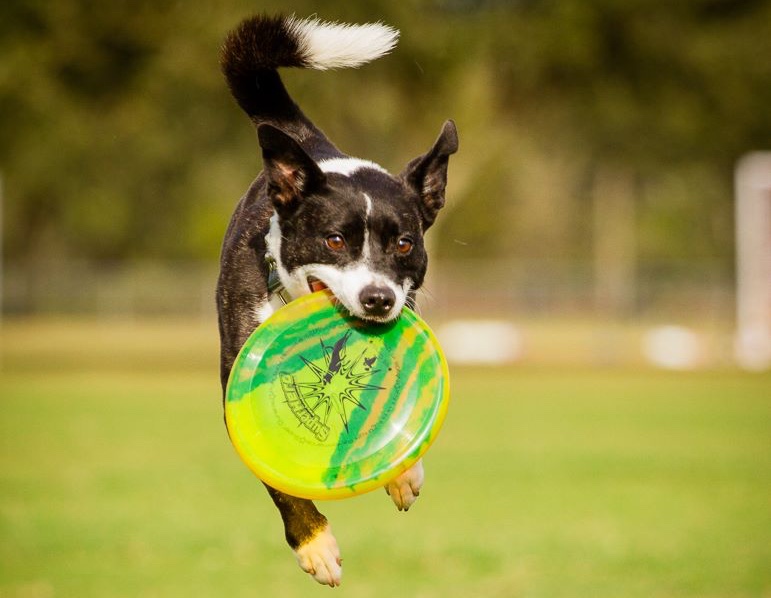
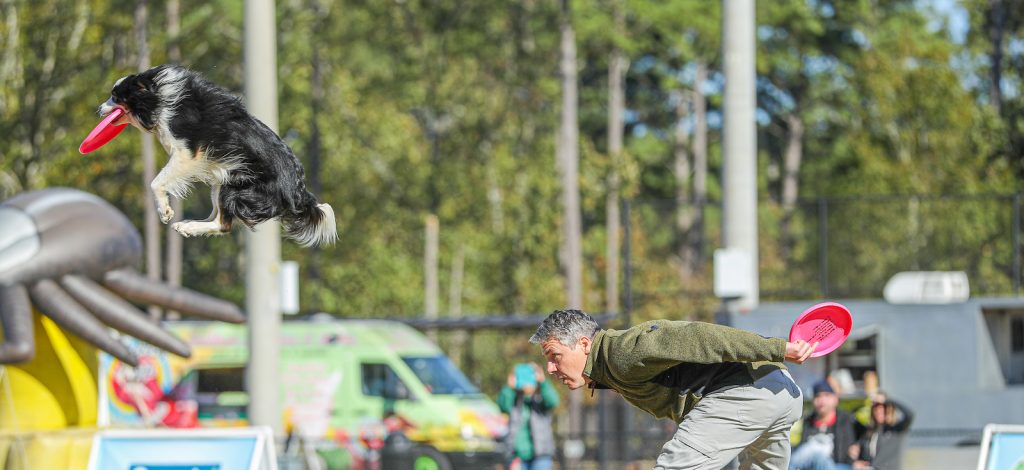
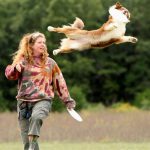

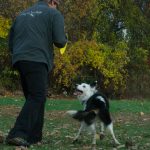

Responses